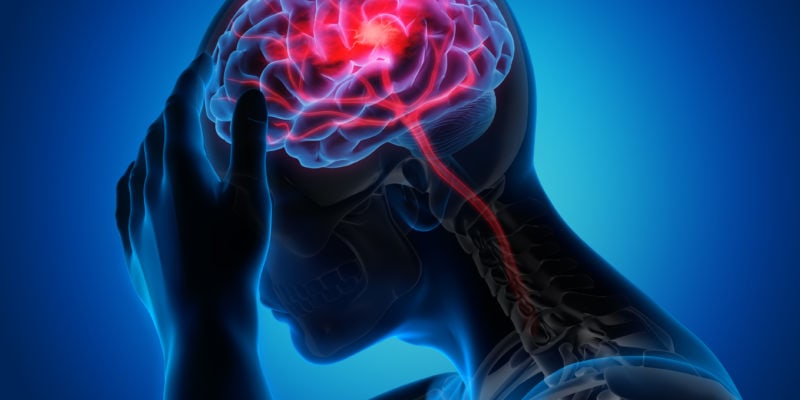What Are Antiepileptic Drugs And How Do They Control Seizures?

Epilepsy is a neurological disorder characterized by recurrent and unprovoked seizures. The treatment of epilepsy often involves the use of antiepileptic drugs (AEDs) to control and manage seizure activity.
This article aims to provide an overview of AEDs, their mechanism of action, and their effectiveness in seizure control. By employing an academic writing style that is objective and impersonal, this article will present factual information without personal bias or subjective viewpoints.
The introduction will adhere to the guidelines of eliminating personal pronouns, maintaining a formal tone, and providing a concise overview of the topic. Understanding the role of AEDs in epilepsy management is crucial for healthcare professionals, patients, and their families, as it enables informed decision-making and optimal treatment outcomes.
Key Takeaways
- Future developments in AED research focus on novel drug targets and formulations, as well as advances in personalized medicine.
- Novel drug targets and formulations offer improved efficacy and reduced side effects, enhancing drug delivery and improving patient adherence.
- Advances in personalized medicine allow for tailoring epilepsy treatment to individual patients based on genetic, physiological, and lifestyle factors.
- Novel drug combinations can enhance therapeutic effects of AEDs, improve seizure control, and reduce side effects, providing personalized treatment options for drug-resistant epilepsy.
Understanding Epilepsy and Seizures
Epilepsy is a neurological disorder characterized by recurrent seizures, and understanding the mechanisms underlying seizures is crucial in developing effective antiepileptic drugs.
The causes of epilepsy vary widely, with some cases having a genetic basis, while others can be attributed to brain injuries, tumors, or infections.
Seizures are the result of abnormal electrical activity in the brain, which can disrupt normal brain function and lead to a variety of symptoms, depending on the area of the brain affected.
Triggers for seizures can include stress, sleep deprivation, certain medications, alcohol or drug use, and hormonal changes. Identifying these triggers is important in managing epilepsy and reducing the frequency and severity of seizures.
Antiepileptic drugs work by stabilizing the electrical activity in the brain, preventing the excessive and abnormal firing of neurons that leads to seizures.
How Antiepileptic Drugs Work
One mechanism through which antiepileptic medications exert their effects is by modulating the electrical activity in the brain, thereby reducing the occurrence and intensity of seizure episodes. These drugs act on various targets within the brain to stabilize neuronal membranes, inhibit the spread of abnormal electrical activity, or enhance inhibitory neurotransmission. The mechanism of action of antiepileptic drugs can be categorized into several broad classes, including sodium channel blockers, calcium channel blockers, GABA enhancers, and glutamate inhibitors. Each class of drugs interacts with specific molecular targets to exert its antiepileptic effects. It is important to note that antiepileptic drugs can also interact with other medications, potentially leading to drug-drug interactions. Therefore, healthcare professionals must carefully consider potential interactions when prescribing antiepileptic medications to ensure optimal efficacy and safety.
Common Types of Antiepileptic Drugs
There are various types of medications commonly used to manage and reduce the occurrence and intensity of seizures. Antiepileptic drugs (AEDs) are a key component of epilepsy treatment and can be prescribed based on the type and frequency of seizures experienced by the individual. The selection of an AED is determined by several factors, including the specific type of epilepsy, potential drug interactions, and the individual’s age and overall health.
Some of the common types of antiepileptic drugs include:
- Sodium channel blockers (e.g., phenytoin, carbamazepine): These drugs work by blocking the sodium channels in the brain, which helps to prevent the spread of abnormal electrical activity that can lead to seizures.
- GABA enhancers (e.g., valproic acid, gabapentin): These medications increase the inhibitory effects of gamma-aminobutyric acid (GABA), a neurotransmitter that helps to calm brain activity.
- Calcium channel blockers (e.g., ethosuximide): These drugs inhibit calcium influx into neurons, reducing excessive electrical activity in the brain.
- Carbonic anhydrase inhibitors (e.g., topiramate): These medications work by inhibiting the enzyme carbonic anhydrase, which helps to reduce brain excitability.
Antiepileptic drugs are typically administered orally in the form of tablets or capsules, although some are available as injectable formulations. The dosage and administration of these medications are tailored to each individual’s needs, with regular monitoring of blood levels to ensure optimal therapeutic effect and minimal side effects.
Effectiveness and Side Effects of AEDs
The effectiveness and side effects of AEDs can vary depending on the specific medication and individual factors.
Effectiveness studies have shown that some AEDs are more effective than others in controlling seizures. For example, studies have found that carbamazepine and valproate are effective in reducing seizure frequency in patients with partial seizures. However, it is important to note that not all patients respond equally to these medications, and individual factors such as age, gender, and underlying health conditions can influence their effectiveness.
In terms of side effects, AEDs can cause a range of adverse effects. Common side effects include dizziness, drowsiness, and fatigue. However, more serious side effects such as liver damage and allergic reactions can also occur. Long-term effects of AEDs are still being studied, and research has shown that some medications may be associated with cognitive impairments and an increased risk of certain medical conditions.
Therefore, it is crucial for healthcare professionals to carefully consider the potential benefits and risks of AEDs when prescribing them to patients with epilepsy.
Individualized Treatment Plans
Individualized treatment plans for epilepsy patients take into account various factors such as the type and frequency of seizures, the patient’s overall health, and any potential drug interactions, in order to tailor the most suitable approach to managing their condition.
The goal of these individualized treatment plans is to provide a customized treatment approach that maximizes seizure control while minimizing side effects. By considering the specific needs and characteristics of each patient, healthcare professionals can select the most appropriate antiepileptic drug (AED) and dosage regimen.
This personalized approach ensures that patients receive the most effective treatment possible, leading to better seizure management and improved quality of life. Furthermore, individualized treatment plans allow for regular monitoring and adjustments as needed, ensuring ongoing optimization of the treatment strategy.
Overall, the utilization of an individualized approach in epilepsy management is crucial for achieving optimal outcomes and providing the best care for patients.
Monitoring and Adjusting AED Therapy
Monitoring and adjusting therapy for epilepsy involves regular assessment and modification of treatment regimens to ensure optimal management of the condition.
One important aspect of this process is adjusting the dosage of antiepileptic drugs (AEDs). The dosage of AEDs may need to be modified based on the individual’s response to the treatment and the occurrence of any side effects.
Seizure frequency monitoring is another crucial element in the management of epilepsy. By closely monitoring the frequency and severity of seizures, healthcare professionals can determine the effectiveness of the current AED therapy and make necessary adjustments.
This monitoring can be done through various methods, such as keeping a seizure diary or using electronic seizure detection devices.
Adjusting the dosage and closely monitoring seizure frequency are essential components of individualized treatment plans for epilepsy, ensuring the best possible control of seizures and improving the quality of life for individuals with epilepsy.
Alternative Therapies for Epilepsy Management
One approach to managing epilepsy involves exploring alternative therapies that can complement traditional treatment methods.
Alternative therapies for epilepsy management include various natural remedies that aim to control seizures and improve overall well-being.
These therapies may include dietary modifications, such as the ketogenic diet, which is low in carbohydrates and high in fats. The ketogenic diet has been shown to reduce seizure frequency in some individuals with epilepsy.
Other natural remedies that are sometimes used include herbal supplements, such as cannabidiol (CBD), which has shown promise in reducing seizures in certain forms of epilepsy.
Additionally, relaxation techniques like yoga and meditation can help manage stress, which is a known trigger for seizures in some individuals.
While alternative therapies should not replace antiepileptic drugs, they can be used in conjunction with medication to provide additional support in managing epilepsy.
Future Developments in AED Research
This paragraph introduces a discussion on future developments in AED research. It specifically focuses on two key points: novel drug targets and formulations, and potential advances in personalized medicine.
Novel drug targets refer to new molecular targets that can be targeted by antiepileptic drugs. This may offer improved efficacy and reduced side effects.
Additionally, the development of novel drug formulations can enhance drug delivery and improve patient adherence.
Furthermore, advances in personalized medicine hold promise for tailoring epilepsy treatment to individual patients. This can be based on their genetic, physiological, and lifestyle factors. It can lead to more effective and personalized treatment strategies.
Novel Drug Targets and Formulations
Novel drug targets and formulations offer promising avenues for the control of seizures in patients with epilepsy. One approach involves exploring novel drug combinations that can enhance the therapeutic effects of antiepileptic drugs (AEDs). Researchers are investigating the potential synergistic effects of combining different AEDs to improve seizure control and reduce side effects.
This strategy aims to overcome the limitations of current AED monotherapy and provide more personalized treatment options for patients with drug-resistant epilepsy. Additionally, targeted drug delivery systems are being developed to enhance the efficacy of AEDs while minimizing systemic side effects. These formulations enable the specific delivery of drugs to the brain, bypassing the blood-brain barrier and increasing drug concentrations at the seizure focus.
By improving the precision and effectiveness of AEDs, novel drug targets and formulations hold promise in revolutionizing the management of epilepsy.
Potential Advances in Personalized Medicine
Potential advances in personalized medicine offer new opportunities for tailoring treatment approaches in epilepsy, allowing for more individualized and targeted interventions based on patients’ specific genetic and molecular profiles. This approach involves the use of personalized diagnostics, such as genetic testing, to identify specific genetic variations or biomarkers that may influence an individual’s response to antiepileptic drugs (AEDs).
- Genetic testing can help determine which AEDs are most likely to be effective for an individual, based on their genetic profile and the known mechanisms of action of different drugs.
- Personalized diagnostics can also assist in identifying potential drug interactions or adverse reactions that may occur due to an individual’s genetic makeup.
- By tailoring treatment based on individual genetic profiles, personalized medicine can help optimize the effectiveness of AEDs and minimize side effects.
- Furthermore, personalized medicine may also help identify novel drug targets or develop new formulations of AEDs that are specifically designed to target an individual’s unique molecular profile, thereby improving treatment outcomes in epilepsy.
Frequently Asked Questions
What are the common risk factors for developing epilepsy?
Epilepsy risk factors include genetic predisposition, family history, head injuries, brain tumors, stroke, developmental disorders, and infections. These factors increase the likelihood of developing epilepsy, highlighting the importance of identifying and managing these risk factors.
Can antiepileptic drugs cure epilepsy?
Antiepileptic drugs (AEDs) cannot cure epilepsy but can effectively control seizures in many patients. AEDs are commonly used as a first-line treatment, but they can also be used in combination with other treatments or as an alternative to surgery or other invasive therapies.
Are antiepileptic drugs safe for pregnant women?
Antiepileptic drugs have been associated with an increased risk of birth defects in pregnant women. Alternative treatment options should be considered during pregnancy to minimize potential harm to the developing fetus.
What are the long-term effects of taking antiepileptic drugs?
Long-term effects of antiepileptic drugs may include cognitive function impairment and potential drug interactions. These drugs have been found to impact cognitive abilities and can interact with other medications.
Are there any natural remedies or supplements that can be used in conjunction with antiepileptic drugs?
Some natural remedies and alternative therapies may be used in conjunction with antiepileptic drugs, but their effectiveness and safety vary. It is important to consult with a healthcare professional before considering any natural remedies or supplements.









